Browse Primary Sources
Locate primary sources, including images, objects, media, and texts. Annotations by scholars contextualize sources.
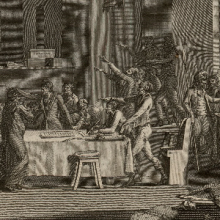
Inside a Revolutionary Committee during the Reign of Terror
The extremely respectful view of sans–culotte militancy is evident in this image, engraved by the French Revolutionary sculptor Berthault and based on a painting by Fragonard, the son of the famous old regime painter. Imitating an old master’s interior scene, it shows a committee somberly meting out revolutionary justice.
On the Murder of Eratosthenes
In this speech, an Athenian man, Euphiletos, defends himself against a murder accusation, claiming that his killing of his wife’s lover was justifiable homicide.
Manifesto of the Enragés
Jacques Roux, a former priest turned radical French revolutionary, became the leading voice for a group known as the "Enraged," because they expressed constant anger at the unfairness shown toward the ordinary, poor people who made up the bulk of the patriotic citizenry and whose plight Roux demanded the government redress by any means necessary.
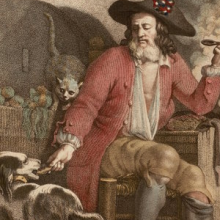
The Good Sans–Culotte
Reflecting values of the French Revolution, Male and female sans–culottes were supposed to embody frugality, thrift, hard work, and, above all, honest devotion—whether to pets, the nation, or fellow comrades.
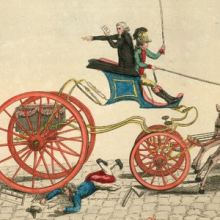
Abuses to Suppress
This French Revolution era print depicts the Third Estate—represented by the peasant at the rear of the chariot, the worker leading the horse, and the merchant driving—delivering to the National Assembly a petition listing "abuses" to be remedied.
Le Chapelier Law
In the spring of 1791, as the National Assembly worked on political and social reforms, workers in Paris took economic matters into their own hands by staging a series of strikes and demonstrations against their employers.
Populace Awake
In the view of the most radical commentators, such as those writing for the newspaper Révolutions de Paris, the French Revolution had to be the work of more than just the deputies of the National Assembly; it had to be an effort of the common people.
Beware the Wealthy Bourgeoisie
The term "bourgeoisie" had many meanings in eighteenth–century France, from the most literal sense of "citizens of a city" to a more sociological meaning of talented and cultivated members of the Third Estate. Some eighteenth–century writers also used the term to refer to merchants.
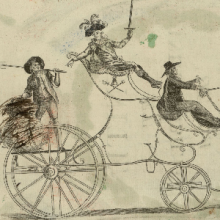
Departure of the Three Orders for Versailles
Although 14 July 1790 was a high point in the aspiration for unity during the French Revolution, the preparation for the Estates–General set the stage for later problems. In this image, representatives of each of the three orders depart together in a cart for the 1789 meeting of the Estates–General at Versailles, where they will advise the King on behalf of the nation.
Cahiers from Rural Districts: Attack on Seigneurial Dues
The petitions from rural communities decried the abuse of seigneurial dues that peasants owed to lords in exchange for which they were supposed to receive protection and supervision.
Three Cahiers from Orléans
The cahiers de doléances ("list of grievances") drawn up by each assembly in choosing deputies to the Estates–General are the best available source of the thoughts of the French population on the eve of the French Revolution.
Cahiers—A Parish Cahier
The cahiers de doléances ["lists of grievances"] drawn up by each assembly in choosing deputies to the Estates–General are the best available source of the thoughts of the French population on the eve of the Revolution.
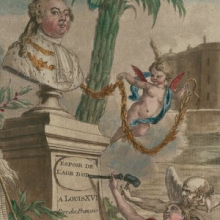
The Crushed Aristocracy
This image uses the classical figures of an angel and a cherub to celebrate the achievements of Louis XVI on the base of a statue. The words state that he has destroyed the "aristocracy" and established the liberty of the French people. The monarch’s action is equated with the other great reminder of national emancipation and the French Revolution, the Bastille, seen in the background.
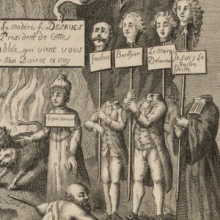
The Welcoming of a Marquis in Hell
Reflecting French Revolutionary sentiments, the image points out the destruction of the nobility, depicting the arrival in Hell of a "marquis" and several other "aristocrats," described in the legend as "conspirators" and "traitors."
Abolition of Nobility
The major principle underlying the 4 August decree found legislative expression in the decree of 19 June 1790. Situated in the broader context of the French Revolution, this document legally abolished the nobility, all its privileges, and, as the excerpt demonstrates, those aspects that seemed particularly contrary to reason.
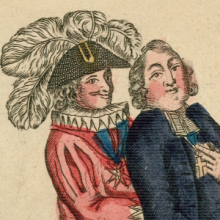
We Must Hope That It Will Soon Be Over
A common complaint of pre-revolutionary rural petitions was the abuse of seigneurial dues owed by French peasants to lords supposedly in exchange for protection and supervision. This image demonstrates the view that peasants envisioned their lords not as protectors, but as exploiters who constantly turned the screws on them to extract ever more rent or other payments.

Oath of the New Horaces
Social discrimination against old regime elites continued in this parody of a famous painting prior to the French Revolution, The Oath of the Horatii, by Jacques–Louis David which focused on the courage of three brothers who thrust their arms bravely forward to signal their willingness to sacrifice themselves for their country.
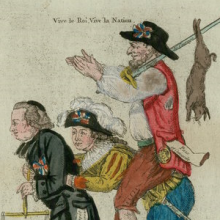
I Was Sure We Would Have Our Turn
Class solidarity was never universal, as this print celebrates the victory of the peasantry over the nobility and clergy. The two defeated orders, linked together to create a horse, support the peasant who with his newly-won freedom, carries the result of a hunt--an activity not legal for commoners under the Old Regime. The peasant also proclaims, “Vive le roi [the King].
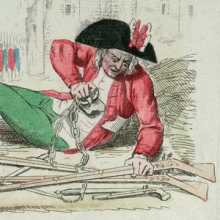
Awakening of the Third Estate
With the Bastille being destroyed in the background, a member of the Third Estate breaks his shackles. Here, the clergy and nobility recoil in fear, thereby emphasizing the conflict between the estates during the French Revolution.
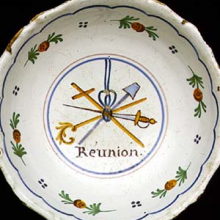
Reunion
This piece of crockery further demonstrates the sentiments of social unity so prevalent at the 1790 Festival of Federation celebrating the French Revolution. The crossed sword, pike, clerical staff, and bonnet symbolize the union of the nobility, peasants, clergy, and workers, respectively.